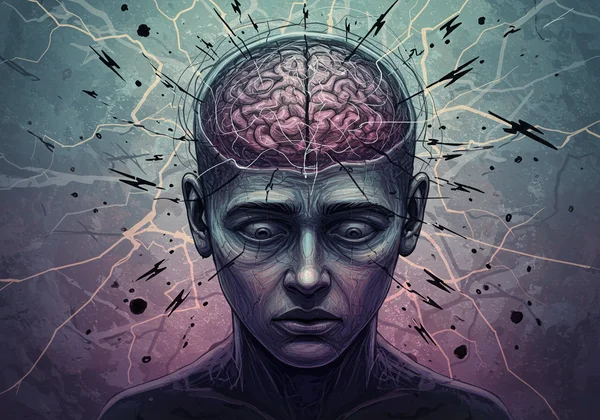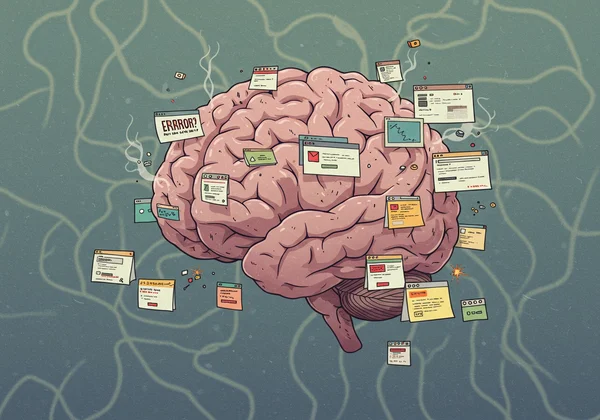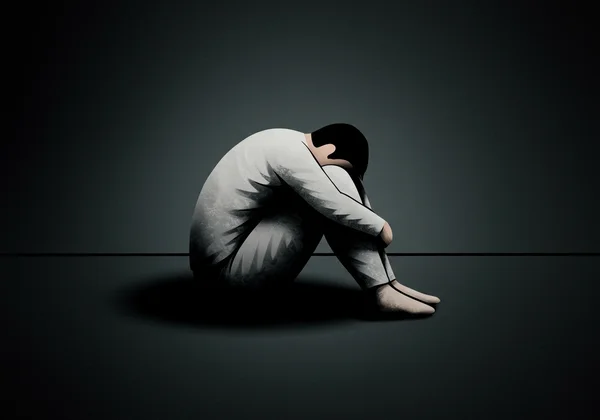ADHD Burnout: Take Our Free Burnout Test to Cope & Find Help
Are you constantly exhausted, overwhelmed, and finding even simple tasks impossible? Do you wonder if it's more than just "normal" ADHD challenges? For those with Attention-Deficit/Hyperactivity Disorder, the line between daily struggles and complete exhaustion can be incredibly blurry. This guide explores the distinct connection between ADHD traits and the profound state of ADHD burnout. Is it burnout or am I just lazy? This is a question many neurodivergent individuals ask themselves. The answer is crucial for your well-being, and a confidential Burnout Test can provide the clarity you need. Here, we'll offer tailored insights and strategies to help you understand your unique experience and begin a path to recovery, starting with a clear first step: getting your assessment.

Understanding ADHD Burnout & Its Unique Triggers
Burnout is not just feeling tired; it's a state of chronic physical and emotional exhaustion. For the neurodivergent brain, this state is often reached through different pathways than for neurotypical individuals. The constant effort required to navigate a world not built for your wiring is a significant, often invisible, drain on your mental resources. This constant friction creates unique triggers that can accelerate the slide into burnout.
Executive Dysfunction & Mental Overload
One of the core challenges of ADHD is executive dysfunction. This refers to difficulties with the brain's management system—the skills that help us plan, organize, initiate tasks, and regulate emotions. Every day, you spend immense mental energy just trying to do things that may come naturally to others. This includes fighting procrastination, remembering appointments, and filtering out distractions. This continuous, high-effort mental work leads to a state of profound mental overload, making your brain feel like a computer with too many tabs open, which eventually freezes and crashes. This isn't a character flaw; it's a neurological reality that makes you more susceptible to complete exhaustion.

Sensory Overwhelm & Rejection Sensitivity Dysphoria
Many people with ADHD experience heightened sensory overload. Bright lights, loud noises, strong smells, or even certain textures can be incredibly jarring and draining. Your brain works overtime to process this constant influx of stimuli, leaving little energy for anything else. Compounding this is Rejection Sensitivity Dysphoria (RSD), an intense emotional pain in response to perceived criticism or rejection. This can lead to chronic people-pleasing and perfectionism as you try to avoid this painful feeling. The combination of sensory battery drain and the emotional stress of RSD creates a perfect storm for burnout.
Recognizing the Signs: Is It Burnout or Just ADHD?
Differentiating between your baseline ADHD symptoms and true burnout can be difficult, as burnout often looks like an extreme version of your everyday challenges. However, the key difference lies in intensity and capacity. While ADHD presents ongoing hurdles, burnout is a state of complete shutdown where your usual coping mechanisms no longer work. Understanding these signs is the first step toward getting help, and a science-backed online burnout assessment can provide clarity.
The 'ADHD Crash': More Than Just Tiredness
The term many use to describe this state is the ADHD crash. This isn't just feeling sleepy; it's a sudden and debilitating loss of all physical and mental energy. During an ADHD crash, you might find yourself unable to get out of bed, speak in full sentences, or even think clearly. It feels like your entire system has short-circuited. Tasks that were once manageable, even with difficulty, now feel completely impossible. This profound state of paralysis is a clear indicator that you have moved beyond simple fatigue into a state of burnout.

Beyond Fatigue: Other Neurodivergent Burnout Symptoms
While exhaustion is central, other symptoms signal neurodivergent burnout. You might notice a significant increase in emotional dysregulation, where your mood swings are more extreme and harder to control. You may lose interest in your hyperfixations or special interests, which can be particularly distressing as they are often a source of joy and dopamine. Your working memory may worsen dramatically, and the "brain fog" becomes so thick you struggle with basic recall. Masking—the conscious or unconscious act of hiding your ADHD traits to fit in—becomes impossible, leaving you feeling raw and exposed. If these symptoms resonate, it's time to check your stress levels.
Effective Strategies for ADHD Burnout Recovery & Prevention
Recovering from ADHD burnout requires a different approach than standard burnout advice. It's not about trying harder; it's about working with your brain, not against it. The goal is to reduce demands, replenish your energy in ways that actually work for you, and build a more sustainable lifestyle. A great starting point is understanding your current level of burnout with a confidential Burnout Test.
Tailoring Self-Care for Your Neurodivergent Brain
Generic self-care tips like bubble baths or meditation can sometimes feel like another chore for an ADHD brain. Effective self-care must be tailored to your unique neurological needs. This might mean "body doubling," where you work on a task alongside someone else to stay focused. It could involve scheduling dedicated time for a special interest without guilt, as this is a primary way your brain recharges. Instead of forcing yourself to sit still, find movement that gives you a dopamine boost, like dancing, hiking, or fidgeting. The key is to find activities that reduce demands on your executive functions and replenish your energy stores.
Setting Sustainable Boundaries & Expectations
Individuals with ADHD often operate in a "boom-or-bust" cycle, over-committing during periods of high energy and then crashing. Recovery involves learning to set sustainable boundaries. This means saying "no" to new commitments when you're already at capacity, even if they sound exciting. It involves communicating your needs to employers, partners, and friends, such as asking for instructions in writing or requesting a quieter workspace. Learning to accept that your capacity fluctuates and being kind to yourself on low-energy days is a radical act of self-preservation. Understanding your limits becomes easier when you have clear data, which you can get from a free burnout assessment.
When to Seek Professional Support for Burnout
While self-help strategies are valuable, professional support can be transformative. It is crucial to find a therapist, counselor, or coach who is knowledgeable about ADHD and neurodiversity. They can help you untangle the layers of shame and self-blame that often accompany ADHD burnout and develop personalized coping strategies. They can also assist with accommodations at work or school. Remember, tools like our free Burnout Test are for screening and self-insight; they are not a substitute for a professional diagnosis or treatment plan from a qualified healthcare provider.
Reclaim Your Energy: Taking the First Step Against ADHD Burnout
ADHD burnout is a real and debilitating experience, born from the unique challenges of living with a neurodivergent brain in a neurotypical world. It is not a sign of weakness or laziness but an indication that your capacity has been exceeded for too long. By understanding its unique triggers, recognizing the signs, and implementing tailored recovery strategies, you can begin to reclaim your energy and build a more sustainable life.
Your journey to recovery starts with understanding where you stand right now. Acknowledging your struggles is a powerful first step.
Ready to gain clarity on your situation? Take our free Burnout Test now to get an instant, science-backed assessment of your risk level.

Frequently Asked Questions About ADHD Burnout
What does ADHD burnout feel like? ADHD burnout often feels like hitting a wall. It manifests as profound physical, mental, and emotional exhaustion. You might experience a complete shutdown known as an "ADHD crash," intense brain fog, heightened emotional sensitivity, and a total loss of motivation, even for activities you once loved. It feels like your brain's battery is not just low but completely dead and unable to recharge.
What is neurodivergent burnout? Neurodivergent burnout is a state of intense exhaustion experienced by individuals whose brains function differently from the societal norm (e.g., those with ADHD, autism, or dyslexia). It stems from the chronic stress of trying to meet neurotypical expectations, masking neurodivergent traits, and navigating constant sensory or executive function challenges. It's a burnout born from the friction of being different in a world that demands conformity.
What is an ADHD crash? An ADHD crash is an acute episode of burnout where your brain and body essentially shut down. It's a more intense and sudden experience than general fatigue. During a crash, you may be unable to think clearly, speak coherently, or perform even the most basic tasks. It's a protective mechanism your body uses when it has been pushed far beyond its capacity.
Is it burnout or am I just lazy? This is a critical distinction. Laziness is a choice—an unwillingness to act despite having the capacity. Burnout is a state of inability—a lack of physical, mental, or emotional capacity to act, regardless of willingness. If you desperately want to do things but find you simply cannot, you are likely experiencing burnout, not laziness. An objective tool like a Burnout Test can help you differentiate; you can find out with a test.
How can I recover properly from ADHD burnout? Proper recovery from ADHD burnout focuses on radical rest and reducing demands. This means aggressively cutting back on obligations, allowing yourself to disengage without guilt, and prioritizing activities that replenish your energy. It involves seeking support from neurodiversity-affirming professionals, setting firm boundaries, and learning to work with your ADHD brain instead of fighting it. The first step is always assessment, so you know what you're dealing with.